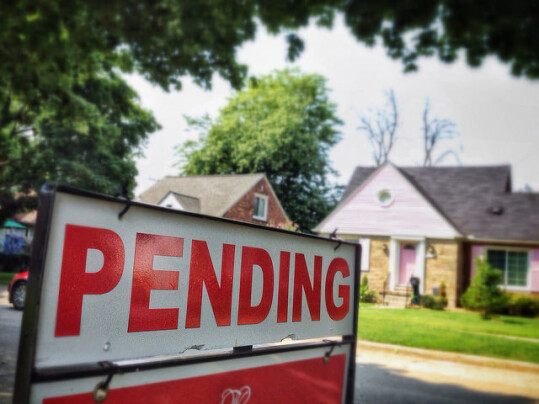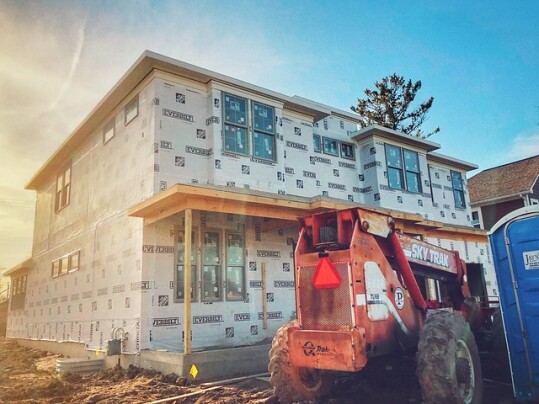The National Association of Realtors’ Pending Home Sales Index measures the number of contracts to buy homes signed each month. Because it tracks contracts, not closings, it’s considered a good indicator of where home sales are headed. In August, the index registered a 2 percent decrease, marking the third consecutive month of declines. Lawrence Yun, NAR’s chief economist, says mortgage rates are the number one factor with buyers. “The direction of mortgage rates – upward or downward – is the prime mover for home buying, and decade-high rates have deeply cut into contract signings,” Yun said. “If mortgage rates moderate and the economy continues adding jobs, then home buying should also stabilize.” Yun expects mortgage rates to become more steady once inflation calms. That, and slower price appreciation, should lead sales to pick up. Regionally, August’s results show contracts to buy homes were down in the Midwest, Northeast, and South, but rose in the West. (source)
Archive for September 2022
Contract Signings Stall In August
Average Mortgage Rates Move Higher
According to the Mortgage Bankers Association’s Weekly Applications Survey, average mortgage rates moved higher last week. Rates increased from the week before across all loan categories, including 30-year fixed-rate loans with both conforming and jumbo balances, loans backed by the Federal Housing Administration, 5/1 ARMs, and 15-year fixed-rate loans. Joel Kan, MBA’s associate vice president of economic and industry forecasting, says while rising rates have made buyers more hesitant, they still have options. “Purchase activity was 29 percent lower than a year ago, with higher rates and economic uncertainty weighing on buyers’ decisions,” Kan said. “With the recent jump in rates, the ARM share reached 10 percent of applications and almost 20 percent of dollar volume. ARM loans remain a viable option for qualified borrowers in this rising rate environment.” Despite higher rates, the purchase index was relatively flat week-over-week. In fact, demand for loans to buy homes was down just 0.4 percent. The MBA’s weekly survey has been conducted since 1990 and covers 75 percent of all retail residential mortgage applications. (source)
Home Price Index Finds Increases Decelerating
The S&P Case-Shiller Home Price Indices are among the leading measures of U.S. home prices. The indices cover all nine census divisions and have been tracking home prices for nearly 30 years. According to the S&P’s most recent release, prices are still increasing, but the increases are getting smaller. In fact, the national index found year-over-year increases were 2.3 percent slower than they were in the previous month’s report. The deceleration was the largest in the history of the index. Craig J. Lazzara, managing director at S&P, says the data shows prices are moving in the same direction all over the country. “The theme of strong but decelerating prices was reflected across all 20 cities,” Lazzara said. “July’s year-over-year price change was positive for each one of the 20 cities, with a median gain of 15 percent, but in every case July’s gain was less than June’s.” Though all regions have experienced continued price increases, the South and Southeast continue to show the strongest growth, with Tampa and Miami leading all included cities. (source)
Housing Slowdown To Continue Due To Fed Policy
Fannie Mae’s Economic and Strategic Research Group releases a forecast each month detailing the group’s view of where the housing market and broader economy are headed. In September, the group’s outlook sees economic growth resuming in the second half of the year, but calls for the housing market’s slowdown to continue as the Fed fights inflation with higher interest rates. Doug Duncan, Fannie Mae’s senior vice president and chief economist, says that fight will likely continue into 2023. “In our view, the recent interest rate surge is due to the market’s recognition of two critical factors: that inflation is indeed not transitory, and that, to tame it, the Federal Reserve will need to be resolute, even at the risk of possible recession,” Duncan said. “That said, the rise in rates is having the Fed’s desired effect on housing, as house price growth began to slow in June. We expect the slowdown in housing to continue through 2023.” (source)
What’s New In New Home Construction?
You can tell a lot about the housing market by watching the balance of supply and demand. When there are too few homes for sale, the market’s harder on home buyers. Too few homes leads to rising prices and buyer competition. These days, fortunately, the number of homes for sale is improving. That’s good news for buyers, as it’ll help slow price increases after years of double-digit spikes. But inventory’s still low, and a big part of reaching better balance is the pace of new home construction. In short, we need more new homes. So what’s happening in the new home market? Well, the most recent New Residential Construction report from the U.S. Census Bureau and the Department of Housing and Urban Development shows the number of single-family homes that began construction last month was higher than the month before. In fact, it rose 3.4 percent. That’s encouraging, as it means a bump in new home supply may be on the way. However, while housing starts rose, permits to build future new homes fell 3.5 percent. That’s an indication that builders who’ve recently ramped up production may soon be pulling back, due to concern about economic conditions and buyer demand. (source)
Homes Still Sell Quickly As Sales Season Closes
Sales of existing homes were relatively flat in August from the month before, according to new numbers from the National Association of Realtors. Home sales were down just 0.4 percent month-over-month. With the sales season coming to a close and the market softening overall, that’s not a surprise. But though sales were flat, homes still sold quickly. In fact, 81 percent of homes sold during the month were on the market less than 30 days. The typical property was on the market only 16 days – one day faster than last year at the same time. Why are homes selling so quickly? Simply put, the inventory of homes for sale remains low. That means fewer choices for home buyers. Lawrence Yun, NAR’s chief economist, says it’ll likely stay this way for a while. “Inventory will remain tight in the coming months and even for the next couple of years,” Yun said. “Some homeowners are unwilling to trade up or trade down after locking in historically low mortgage rates in recent years, increasing the need for more new-home construction to boost supply.” (source)
Demand For Home Loans Moves Higher
According to the Mortgage Bankers Association’s Weekly Applications Survey, mortgage demand was up almost 4 percent last week from the week before. The increase was the first in six weeks and included a 1 percent gain in the number of borrowers applying for loans to buy homes. Joel Kan, MBA’s associate vice president of economic and industry forecasting, says the improvement is evidence that the market is still volatile. “As with the swings in rates and other uncertainties around the housing market and broader economy, mortgage applications increased for the first time in six weeks but remained well below last year’s levels, with purchase applications 30 percent lower and refinance activity down 83 percent,” Kan said. “The weekly gain in applications, despite higher rates, underscores the overall volatility right now as well as LaborDay-adjusted results the prior week.” Also in the report, rates moved higher last week, with increases to 30-year fixed-rate loans with both conforming and jumbo balances, loans backed by the Federal Housing Administration, and 15-year fixed-rate loans. The MBA’s survey has been conducted since 1990 and covers 75 percent of all retail residential mortgages. (source)







